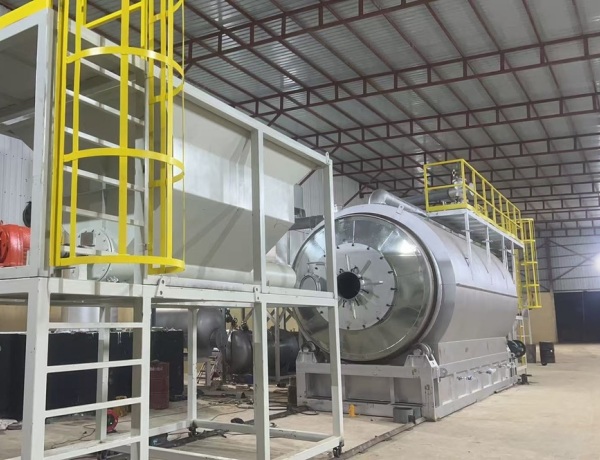

A Thermal Desorption Unit (TDU) is a specialized system used for the treatment of drilling cuttings, oil sludge, and hazardous waste material generated during oil exploration, production, refining, and storage. Oil sludge typically consists of a mixture of oil, water, solids, and heavy hydrocarbons, making it challenging to treat and dispose of safely. Thermal desorption is a highly effective method for separating and recovering hydrocarbons from the sludge while minimizing environmental impact.

-
Oil sludge is pre-treated to remove large debris and homogenized to ensure
consistent processing.
- The sludge is then fed into the TDU system, often using a screw conveyor or pump or excavator.
-
The sludge is heated in a controlled environment, typically in a rotary kiln or
thermal desorption chamber.
- The temperature is carefully regulated (usually between 250°C to 600°C, depending on the sludge composition) to volatilize the hydrocarbons and water without causing combustion.
-
The heat causes the oil and water to evaporate, leaving behind the solid
residues.
- The vaporized hydrocarbons and water are then separated from the solids.
-
The vapor stream is passed through a series of condensers and separators to
recover the oil and water.
- Recovered oil can be recycled or reused, while the water is treated to meet discharge standards.
-
The remaining solids, now free of hydrocarbons, are cooled and discharged.
- These solids are often non-hazardous and can be safely disposed of or used in construction or landfilling.
-
Any remaining gases are treated using scrubbers, filters, or thermal oxidizers
to remove pollutants before being released into the atmosphere.
- High Efficiency: Capable of recovering up
to 99% of hydrocarbons from oil sludge.
- Versatility: Can handle a wide range of
oil sludge types and compositions.
- Environmental Compliance: Meets strict
environmental regulations by minimizing emissions and hazardous waste.
- Scalability: Available in various sizes
to accommodate different volumes of sludge.
- Oil Refineries: Treatment of tank bottom
sludge and oily waste.
- Oil Exploration and Production: Cleaning
up drilling mud and cuttings.
- Waste Management Facilities: Processing
hazardous waste containing hydrocarbons.
- Soil Remediation: Treating contaminated
soil from oil spills or industrial sites.
- Resource Recovery: Recovers valuable oil
for reuse, reducing waste and costs.
- Volume Reduction: Significantly reduces
the volume of hazardous waste.
- Non-Combustion Process: Operates at
temperatures below combustion levels, reducing the risk of harmful emissions.
- Compliance: Helps industries comply with
environmental regulations for hazardous waste disposal.
Thermal desorption units are a critical technology for the treatment of oil sludge, offering an environmentally friendly and efficient solution for hydrocarbon recovery and waste management. By converting hazardous waste into reusable resources, TDUs play a vital role in promoting sustainability and regulatory compliance in the oil and gas industry.